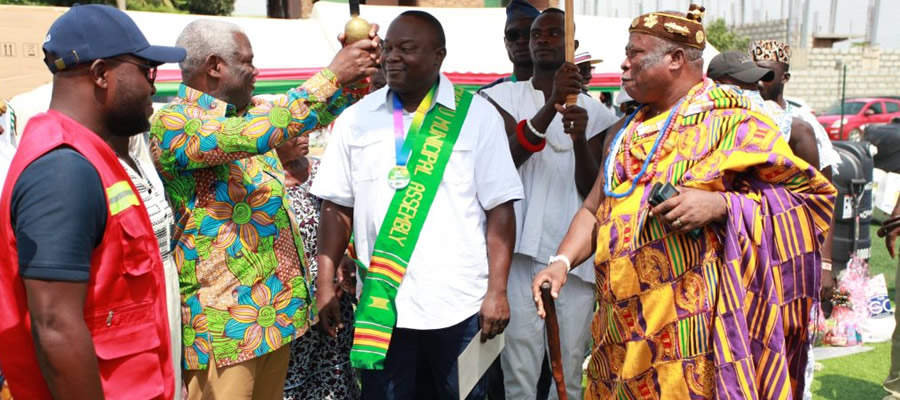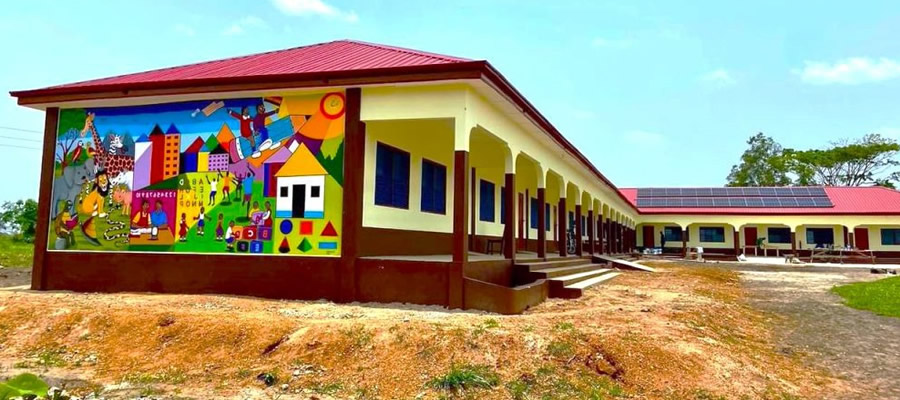
Population Size and Change
Greater Accra recorded a population of 4,010,054 in 2010. This is an increase from 491,817 in 1960, 851,614 in 1970, 1,431,099 in 1984, and 2,905,726 in 2000. Thus, the population of Greater Accra recorded an eight-fold increase within a period of 50 years from 1960-2010. There was a 38.0 percent increase in the population in the period from 2000 and 2010 compared with a 73.2 percent increase between 1960 and 1970, a 68.1 percent increase between 1970 and 1984, and a 103.0 percent increase between 1984 and 2000. Furthermore, Greater Accra recorded a 3.1 percent annual population growth rate between 2000 and 2010.
This compares with 5.2 percent between 1960 and 1970, 3.3 percent between 1970 and 1984, and 4.4 percent between 1984 and 2000. Accra has the largest share (46.1%) of the regional population due to in-migration from other regions and natural increase. Adenta has the lowest share (1.9%) of the regional population, reflecting its smaller geographical size.
Population Density
Population density is the number of persons per square kilometre of land. The population density of Greater Accra is 1,235.8 persons per square kilometre in 2010. This is an increase from 167.0 in 1960, 278.4 in 1970, 441.0 in 1984 and 895.5 in 2000. The Northern Region has the largest land area – almost a third of the total land area of Ghana (29.5%) while Greater Accra occupies the least land area (1.4 percent). The two regions have had the lowest and the highest population density respectively in every census since 1960Age and Sex Structure
Age structure
The highest proportion (11.7%) is in the 0-4 year age group, and the lowest proportion (0.1%) is in the oldest age group of 90-94 years. In 2010, the proportion of the population generally decreases in each subsequent age group. This is a change from 2000, when the highest proportion of the population was found in the 20-24 year age group. In addition, while the highest proportion of males (12.3%) is found in the 0-4 year age group, the highest proportion of females (11.7%) is found in the 20-24 year age group.
Greater Accra?s population has a youthful structure, with a broad base consisting of numerous children and a peak of a small number of elderly persons. Adolescents and young adults (15-29 years old) now constitute 32.2 percent of the population, a clear indication of the high rate of migration into the region.
A situation in which 20 percent or more of a population is aged between 15-24 years has been described as “Young Bulge”, a phenomenon that may subject a society to potentially disruptive political and social movements (Heinsohn, 2003). The rapid growth of the adolescent and youth populations exerts increased pressure to expand education, health services and employment opportunities. Furthermore, 42.3 percent of the population is aged between 25 and 59 years, an increase from 38.7 percent in 2000. Provision of jobs for the increasing adult population is a critical issue in the 21st century.
The proportion aged 60 years and older was 5.5 percent in 2010. Ageing may appear to be gradual at the moment but the older population will grow rapidly as the fertility transition advances depending, of course, on the speed of the decline and as health care continues to improveTable 3.4 presents the dependent populations - 0-14 years (children) and 65 years and above (elderly) - and the working population - 15-64 years - by sex for the districts in Greater Accra.
The highest proportion of the population of working age is in Accra (67.3%), and the lowest proportion (53.3%) in Dangme East. Furthermore, while the highest proportion of children (41.2%) and of the elderly (5.5%) are found in Dangme East, the lowest proportion of children (28.8%) is found in Accra and of the elderly (2.4%) in Ashaiman. All these may be linked to migration, since migration tends to be age-selective.
The young and youthful tend to migrate while children, the aged and weak stay at the place of origin. Thus, Accra and Ashaiman, which are leading destinations for migrants in Greater Accra, have proportionately less children and elderly people while Dangme East, a leading migrant-sending area, has the highest proportion of children and the elderly.
Total dependency ratio (ratio of persons in the dependent ages to those in the economically productive ages in a population) in Greater Accra is 53.4, much lower than the national ratio of 76.0. The total dependency ratio is lowest in Accra (48.6) and highest in Dangme East (87.8). This further reflects the migrant-receiving status of Accra and the migrant-sending status of Dangme East, as noted earlier on.
A low dependency ratio is positive since it means that there are fewer non-working people being looked after by the working population. The dependency ratio of Accra may be deceptive because a substantial proportion of migrants in Accra send remittances to relatives who live outside the metropolis (Anarfi et al., 2003), and caution should be taken in its interpretation.
Sex Structure
Greater Accra had a sex ratio of 93.6 in 2010, which means there are about 94 males to every 100 females in the region. This situation is consistent with the national sex ratio of 95.2, and could be attributed to male emigration and higher life expectancy at birth for females. With the exception of Adenta, all the districts in Greater Accra have more females than males. Adenta?s high sex ratio could indicate that the municipality may be fast establishing itself as a migrant-receiving area of male adults. Finally, the lowest sex ratios, found in in Dangme West and Dangme East, could be linked to male out-migration.
Date Created : 11/29/2017 3:23:25 AM












 facebook
facebook
 twitter
twitter
 Youtube
Youtube
 +233 593 831 280
+233 593 831 280 0800 430 430
0800 430 430 GPS: GE-231-4383
GPS: GE-231-4383 info@ghanadistricts.com
info@ghanadistricts.com Box GP1044, Accra, Ghana
Box GP1044, Accra, Ghana